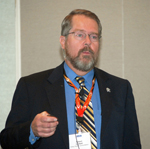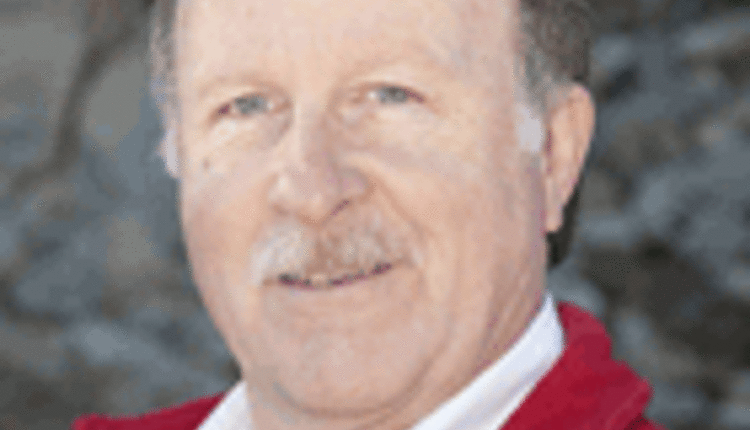 Utah veterinarian and dairy consultant Bob Corbett (pictured) doesn't look like a rabble-rouser, but he's a real militant when it comes to blowing up long-held ideas about feeding calves and heifers. Here are a few that he smashed in his presentation yesterday at the 7th annual Dairy Cattle Reproduction Council annual meeting in Sacramento, Calif., which concludes today.
Utah veterinarian and dairy consultant Bob Corbett (pictured) doesn't look like a rabble-rouser, but he's a real militant when it comes to blowing up long-held ideas about feeding calves and heifers. Here are a few that he smashed in his presentation yesterday at the 7th annual Dairy Cattle Reproduction Council annual meeting in Sacramento, Calif., which concludes today.1. Calves that don't receive timely adequate and quality colostrum grow one-third slower than calves which do.
2. Calf and heifer feeding that focuses on least cost rather than maximum growth are the most expensive in the long run.
3. Anything done to increase the amount of protein and energy consumed by milk-fed calves will increase growth rate and significantly improve its health and productivity.
4. Excellent nutrition maximizes immune response from vaccines. Their failure is almost always related to nutrition-related deficiencies in the animal.
5. Calves should be weaned according to dry matter intake, not age, and should not be forced to be weaned by reducing or removing milk.
6. Aggressive feeding of calves must be backed up by aggressive feeding of heifers, including rations formulated for them.
7. Heifers treated for pneumonia more than once in their lives should be culled.
8. Heifers should be bred according to height – 51 inches at the withers for Holsteins and 44 inches for Jerseys – rather than age.
9. Considerable information is available for formulating calf and heifer rations that will allow heifers to reach maximum frame size and calve at 20 months of age.
10. Well-fed, fast-growing heifers are more resistant to disease, have lower mortality, and require less medicine. They also produce about 1,700 pounds more milk during their first lactation than conventionally raised animals calving at older than two years.







